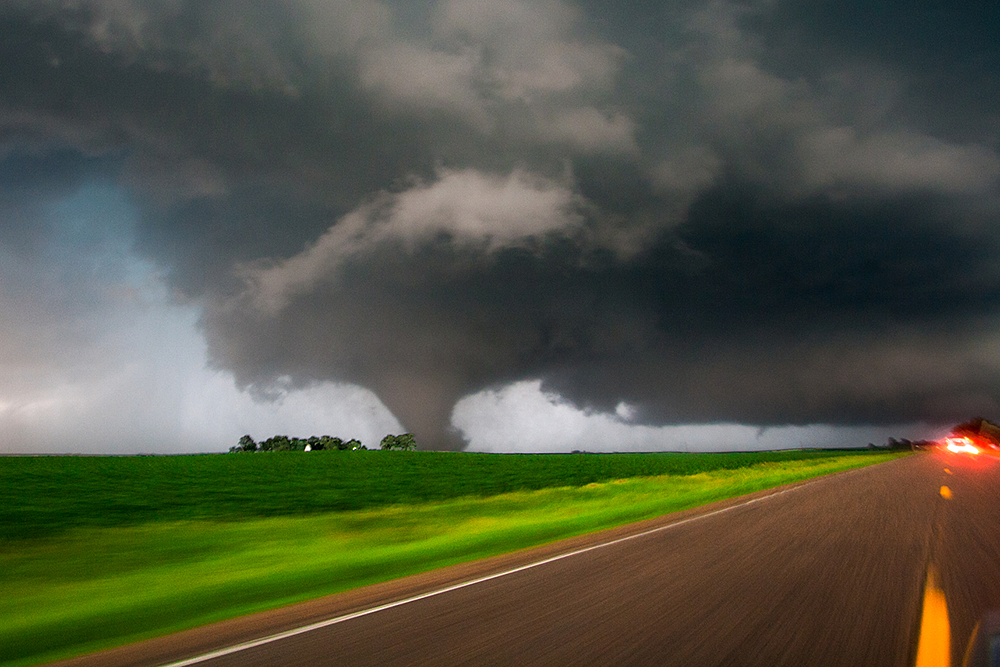Tornado Tips For Drivers Traveling Through Midwest, South

Tornadoes remain one of nature’s most devastating, furious forces. Tornadoes remain one of nature’s most devastating, furious forces.
A recent twister in Nashville killed 25 and left roughly 20,000 residents without power.
Wide swaths of the United States reside in an area known as “Tornado Alley” so residents and drivers passing through those areas should remain vigilant and aware of the threat this time of year.
Tornado Alley’s boundaries aren’t strictly defined, though the general consensus indicates it stretches from central Texas to the Canadian prairies and from eastern Colorado to western Pennsylvania. States like Ohio, Minnesota, Indiana, Illinois and Wisconsin are sometimes included as part of Tornado Alley.
Though tornadoes can technically strike any time of year, they’re commonly clustered between March and June. Tropical cyclones, which occur in late summer and autumn, can also morph into hurricanes.
In spring, tornadoes originate as hot air moves back into the Gulf of Mexico, forcing cold air into the Southeastern United States and states along the Gulf Coast. Weeks go by and as the temperature increases further north, tornadoes become more common in Midwestern states and the Great Plains. Regions near the Great Lakes experience the most tornado activity during summer months.
While storm chasers see how close they can get to a tornado, the National Weather Service urges bystanders to get as far away from twisters as possible. One way to avoid getting caught off-guard is by paying attention to weather reports for areas you’re in or traveling to, according to the NWS.
Inside a vehicle is one of the worst places to be when a tornado rips through the region, according to the National Oceanic and Atmospheric Administration.
“There is no safe option when caught in a tornado in a car, just slightly less-dangerous ones,” the NOAA said.
A basement or underground shelter is an ideal place to hunker down, and safety experts remind people to keep clear of windows, doors and exterior walls during a tornado.
The NOAA offers the following safety tips for drivers caught near a tornado.
- If the tornado is visible, far away, and the traffic is light, you may be able to drive out of its path by moving at right angles to the tornado.
- If you are caught by extreme winds or flying debris, park the car as quickly and safely as possible -- out of the traffic lanes.
- Stay in the car with the seat belt on.
- Put your head down below the windows; cover your head with your hands and a blanket, coat, or other cushion if possible.
- If you can safely get noticeably lower than the level of the roadway, leave your car and lie in that area, covering your head with your hands.
- Avoid seeking shelter under bridges, which can create deadly traffic hazards while offering little protection against flying debris.
Additional driving safety driving tips from Ready.gov:
- Make a plan. Determine where everyone will meet in case of an emergency. Plan ahead if you’re driving through an area that’s prone to tornadoes.
- Build a kit. An emergency preparation kit should contain bottled water, candles, portable radio, batteries, first-aid kit.
- Memorize emergency contact numbers. Make sure your children know important cell phone numbers and other emergency contacts.
Recommended items for your vehicle emergency road kit:
- First-aid kit
- LED flashlight
- Extra batteries
- Snacks (energy bars, granola)
- Jumper cables
- Flares
- Reflective vest
- Tools (jack, tire iron)
- Tow rope
- Cell phone charger
- Recently inspected spare tire
- Drinking water
Article by Jordan Guinn, senior reporter for Sensible Driver. Write to jordan@sensibledriver.com.